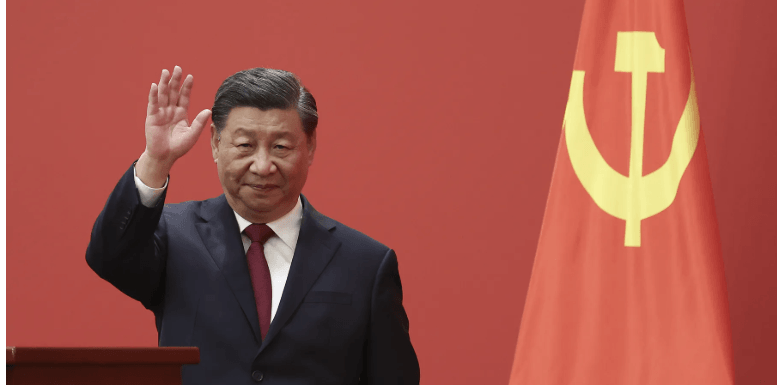
 Victor Bwire./FILE
Victor Bwire./FILE
As we take stock of the achievements, opportunities and challenges brought about by the Kenya Constitution 2010, promulgated 15 years ago, suffice to note that, yes the freedom of expression space has expanded, freedom of expression and right to information entrenched in our laws, liberation of the media space more pronounced, digital migration well managed, growth of sector players recorded and above all, more diversity in media content is noted.
Parliament passed the Kenya Information and Communication Amendment 2013 and the Media Council 2013, on 5th of December 2013, to actualize among other laws, Articles 33, 34 and 35 of the Constitution.
All good, and noted expansion of televisions stations to current 135, radio stations to current over 300, and over 15,000 media practitioners and journalists, and very vibrant online community.
Media is among the most trusted institutions in Kenya and plays a critical role in the agenda-setting function of framing and discussions on public interest issues.
In addition to the mark made by traditional national media, there is a huge growth in community media especially radio, which are nearly in all the 47 counties, local based radio stations are growing and more importantly, the huge growth and influence of digital content largely consumed by the youth.
Granted, media in Kenya as in the rest of the world is grappling with professional, independence and sustainability challenges because of the dwindling audiences and revenue, technological developments and related disruptions and professional hurdles especially brought about by declining democratic tendencies from the economic and political class.
The challenges have been very frustrating to the journalists, especially senior editors and managers in the industry, who seem to receive bashing from all and sundry while acknowledging the importance of feedback and fair criticism. Kenya still retains very outdated laws and practices that frustrate the full enjoyment of press freedom, 15 years later after the Kenya Constitution 2010.
For this reasons, Kenya’s press freedom ranking has declined to 117th according to the 2025 World Press Freedom Index compiled by Reporters Without Borders (RSF), with a score of 49.4, down from 53.2 in 2024, placing the country in the “difficulty” category (RSF, 2025). This marks a continued downward trend from previous years: 51.15 in 2023, 64.59 in 2022, and 72.2 in 2013.
The consistent decline reflects a deteriorating media environment characterized by increased restrictions, harassment, and intimidation of journalists.
The country retains nearly 20 laws that are considered dangerous to press freedom including the Computer and Cybercrime Act, the Books and Newspapers Act, Defamation Act, Official Secrets Act, Kenya Broadcasting Act, Preservation of Public Security Act, Cap 57; Public Order Act, Cap 56; Film and Stage Plays Act, Cap 222; Chief’s Authority Act, Cap 128;;among others. The Penal Code criminalizes petty crime and, in some provisions, criminalizes free speech including the following sections 40 (1); 66; 66A; 67; 96; 194-200; touching in different issues but unduly limit freedom.
Media sector has not been streamlined in the
major development policies of the country thus missing out on a sector very
crucial to national development.
The country needs a media policy that will streamline the operations and regulation of the sector through system that strengthens media freedom, enhance independence, build the capacity of the media to set agenda representing public interest and supports a regulatory framework that cultivates professionalism accountability.
Largely, media regulation is provided for through KICA and the Media Council Act 2023. The Current Media Council Act qualifies as the body tasked with the responsibility of setting media standards and ensuring compliance with those standards the Constitution and affirmed by Courts, is very progressive though requires some amendments, given the emerging issues in the media and practice of journalism.
There overlaps in the regulation of the media sector. For example, advertisements on alcohol are banned on traditional media citing protection of children/minors but allowed online yet global trends indicate minors largely consume content from online contents.
The industry is concerned about the worrying trend in Kenya where courts are issuing exorbitant damages in civil suits against media organizations and individual journalists. In addition, concerns have been raised a worrying trend of gag orders against the media. These orders if not well dealt with have the potential to affect the state of press freedom in Kenya.
Security agencies have been on notice for harassing and intimidating journalists while undertaking their duties. The same has been the case with a certain set of politicians who do not respect the freedom of the press. These cases were for instance faced before, during and after elections.
High taxes on equipment and printing paper have seen the cost of media and local content production very high, which has compliance issues- journalists are unable to pay accreditation fees while media enterprises are unable to subscription fees-
In addition to the external interferences that pose a challenge to independent media, lack of work ethics, professionalism or integrity by some journalists with the notion that reporters and editors solicit for bribes to write great stories has greatly affected journalists’ credibility. The issue of poor pay and working conditions has also undermined independence of the media as journalists, easily get compromised and pursue stories guided by individual personal interests rather than public interest.
Media in Kenya is currently undergoing significant change, both in terms of professionalism practice and operating environment that climaxed with the public protests related to governance issues.
Tensions between the media, some critics and government has escalated to worrying levels, while access to information from public agencies has diminished allowing information manipulation and disinformation to flourish.
The executive and by extension politicians allied to the ruling political party on the other hand would want a media that gives them an unfettered opportunity to reach and influence the citizens to safeguard their support bases and thereby extend their tenure in power even if they are bad leaders.
The Media on the other hand are driven by public interest concerns and therefore prefers an operating environment that allow for access to public resources, as well as unfettered access to information and editorial independence. Such an environment requires that journalists are assured of their safety, independence and engagement.
Its time journalists separated the commercial interests of their employers/media owners and the professional ethics for which they were trained on. Journalists while serving the interests of employers also work on ensuring and holding themselves to the professional standards that differentiate them from media workers.
This cannot be achieved within the existing structures in the industry. We need unity amongst journalists Unions, associations and the like to work joint efforts to advocate for press freedom.
Instead of editors and the media owner’s association worrying too much about their balance sheets, they should support each of unifying journalists and the creation of structures that enhance media professionalism, accountability and welfare.
People in the industry need to appreciate the fact that the media landscape has changed and what is being taught in schools seems not be relevant to the current media environment in terms of practice. Journalists’ ought to be trained on how to use and navigate through various digital platforms and related tools including AI. Are media houses allowing journalists to specialize and pursue investigative stories?
Media training institutions need to ensure that journalists are trained to become analytical, having the ability to break information to audiences.
Journalism training institutions need to look at emerging areas in the profession including safety and protection, online tools for processing news, data journalism, and analytical journalism. Include Media Information and Digital Literacy courses in the teaching modules.
It’s very admirable that the anticipated media policy includes a requirement that the overall responsibility of running a media enterprise shall lie on a qualified professional journalist.
This requirement must be declared in registration instruments and must be a precondition for accreditation and/or licensing. In addition, a requirement that a publicly available frequency management plan exists and clearly lists all companies and individuals with radio and TV frequencies per geographical location.
A review of the mentioned laws and administrative codes that negate the gains provided for under the Constitution on press freedom, overlaps in the regulatory environment and a serious consideration to create a special prosecution unit to deal with impunity and crimes against journalists in the criminal justice system.
Above the suggested media sustainability interventions, including on taxing regime for media equipment and materials, high level engagements with big techs on content compensation, advertising, establishment of a media fund among others cannot wait.











![[PHOTOS] Elgeyo Marakwet landslide victims arrive in Eldoret for care](/_next/image?url=https%3A%2F%2Fcdn.radioafrica.digital%2Fimage%2F2025%2F11%2F425460d9-7ff1-4975-8a1f-cd0aaefb7812.jpg&w=3840&q=100)

